Luotong Village of Badi Town in Weixi County, Diqing
Luotong Village (洛通社), located in Badi Town (巴迪乡), Weixi County (维西县), Diqing (迪庆州), is a stunning hidden Tibetan village that was only discovered by tourists in 2005. Over the past 12 years, fewer than 1,000 visitors have graced this beautiful place. With its minimal crowds and breathtaking scenery, it’s an ideal spot to take stunning photos during holidays, ensuring your social media posts stand out.
Nestled at an altitude of over 2,000 meters, Luotong Village is surrounded by over 1,000 ancient walnut trees, some over 400 years old. The age of the village remains a mystery. The location is quite remote, requiring at least a 6-hour drive from Shangri-La (香格里拉).
Behind the village lies the sacred Nombogqi Mountain (农布格切), where locals graze their livestock. As they ascend the mountain, they can discover nine mysterious alpine lakes. On clear days, it’s possible to see seven lakes from the summit, along with the majestic Meili Snow Mountain (梅里雪山), famous for its “Golden Sunrise” views.
There are dark, mysterious lakes where locals believe tossing a stone will summon rain, alongside turquoise lakes sparkling amidst the mountains.
In the past year, Yunnan has welcomed nearly 400 million tourists. Yet, in this vast province, there remains a village that has seen fewer than 1,000 visitors in 12 years, all while being guarded by nine stunning lakes and a sacred mountain.
The Beauty of Luotong Village
Luotong Village is a beautiful Tibetan settlement hidden in the northern mountains of Yunnan, within Weixi County. Even local Shangri-La residents are often unaware of its existence. However, following the release of a video by Yitiao (一条), Luotong has gradually gained fame and opened new hiking opportunities in the travel community.
This village, known for its “Nine Lakes and One Mountain” (九湖一山), is a Tibetan village along the ancient Tea Horse Road (茶马古道). Despite its remoteness, it retains a pure beauty untouched by modern disturbances.
Photography by Chen Qinqin (陳沁沁)
Nine Lakes and One Mountain
While referred to as “nine lakes,” the area actually boasts over a dozen lakes scattered across the mountains. These lakes resemble pearls dropped by fairies among the peaks. The term “nine lakes” specifically refers to a cluster of the most prominent ones, encircled by a series of rugged mountain ranges.
The nine lakes are steeped in local legend. Walking the paths around “Nine Lakes and One Mountain,” you’ll be serenaded by the myriad bird songs that fill the air.
Hiking up Nombogqi Mountain, you can behold the enchanting alpine lakes and the renowned Meili Snow Mountain. The term “one mountain” refers to the magnificent Meili Snow Mountain.
When the weather is clear, seven lakes can be seen simultaneously from the mountain’s summit, offering stunning views of both the lakes and the snow-capped peaks.
A Hidden Gem
For the villagers, the sacred mountain and lakes are places of blessing. For outdoor enthusiasts, this region offers a rare hiking trail, revealing nine unique alpine lakes along the way. Although it requires an overnight trek to reach the summit and acclimatize to the altitude, the scenery includes meadows, forests, and lakes, with the Milky Way shining brightly overhead at night.
From the village, a two-hour hike leads to a pasture at 4,000 meters elevation, directly facing the Meili Snow Mountain. Villagers often serve fresh milk and freshly made butter tea in their homes, benefiting from the rich grasses in the region.
The slopes are filled with wild vegetables and mushrooms, particularly Matsutake mushrooms (松茸) in June and July, allowing for a delightful harvest that culminates in tasty mushroom dishes.
During clear weather, hikers can see the seven lakes: Heart Lake (心湖), Turquoise Lake (绿松石湖), Moon Lake (月亮湖), Xiezi Lake (斜子措), White Lake (白湖), Chugang Lake (楚刚), and Cuoma Lake (措玛), all encircling the majestic Nombogqi Mountain. The breathtaking views make every challenging moment worthwhile!
Best Time to Visit
From March to May, the rhododendrons bloom, creating stunning landscapes as the varying snow melt creates a beautiful gradient of blossoms up the mountains. As you ascend, the rhododendron bushes grow shorter, eventually leading to an area carpeted with a medicinal herb known as snow tea (雪茶), prized for its health benefits.
Snowfall begins around mid-September, with the region covered in white from December to February, making it less accessible. When the snow melts, you can spot the black fungus known as Cordyceps (虫草) peeking through.
Preserving Paradise
The villagers cherish their environment, refusing mining proposals and promoting eco-tourism. They believe in living simply—staying in local homes and hiring local guides.
The impetus to develop tourism began when a young woman from Luotong married a primary school teacher in the nearby Yubeng Village (雨崩). The tourism development in Yubeng led to significant improvements in local livelihoods.
Years later, the couple reminisced about the lakes, prompting a journey to explore Luotong. In August of that year, they funded a trip for travelers from Sichuan and Guangdong to visit, leading to a well-known post on a major outdoor travel website.
A journalist later wrote about the “Nine Lakes and One Mountain,” sparking interest in Luotong. However, even with this newfound fame, the village still saw fewer than 1,000 visitors in 12 years.
As many young villagers leave for work elsewhere, the growth of tourism could provide income and help preserve this hidden paradise.
Travel Tips for Luotong Village
Coordinates
Yunnan Province, Diqing Prefecture, Weixi County, Badi Town, Luoyi Village, Luotong Village.
Getting There
To reach Luotong Village from Lijiang (丽江), take a bus to Weixi County, where you can switch to a smaller vehicle. There are two daily buses from Weixi to Badi, departing at 7:00 AM and 11:00 AM, costing around 25 yuan and taking approximately four hours.
Alternatively, buses leave from Deqin (德钦) to Badi at 7:00 AM, with a similar fare.
Upon reaching Badi, you must disembark at Luodatang (罗达塘) and hike about an hour up a small path to Luotong Village. Local guides can assist with arrangements.
The path from Luodatang to Luotong is rough; only off-road vehicles can navigate it, while others cannot. The first village you will see after 20 minutes of travel is Luotong.
Hiking Up the Mountain
Two routes lead up from Luotong Village: one that circles around the back of the village, which is risky and less traveled, and another leading to a medicinal herb base, which is the more common route. The distance from the village to the herb base is about 13 kilometers, typically accessed via rented village vehicles. Once on the mountain, a guide will help navigate the many paths to avoid getting lost, with a fee of 350 yuan for the day.
Horse Riding
There are few horses available in the village. Riding to the second pasture costs 500 yuan, with differing prices for different distances. However, horseback riding is not advised due to narrow paths and steep drops, and it’s stipulated that horses can only carry people, not goods.
Suggested Hiking Itinerary
Day 1: Arrive in Lijiang, check into hotel. Dinner at Wild Mushroom Hot Pot (野生菌鍋) at Ancient Town No. 1.
Day 2: 8-hour journey from Lijiang to Luotong Village, with lunch in Tacheng (塔城) and a vehicle transfer to Luotong. Meals included at the hotel and local dining.
Day 3: Luotong Village to the medicinal herb base (1.5 hours hiking), then to the first pasture (1.5 hours) and camp at the second pasture (3 hours). Meals included.
Day 4: Trek from the second pasture down to the first pasture (2.5 hours). Meals included.
Day 5: 4-hour hike from the first pasture back to Luotong, then return to Tacheng for hotel stay. Meals included.
Day 6: Travel from Tacheng to Zhongdian, observing golden snub-nosed monkeys and visiting the Dukezong Ancient Town (独克宗古城). Meals included.
Day 7: 4-hour journey from Zhongdian back to Lijiang, with stops at Tiger Leaping Gorge (虎跳峡) and exploring Lijiang Ancient Town. Meals included.
Day 8: Departure from Lijiang with breakfast provided.
Final Note
Visiting Luotong Village offers a rare glimpse into untouched nature and traditional Tibetan culture, perfect for those seeking adventure and tranquility away from the bustling tourist spots.
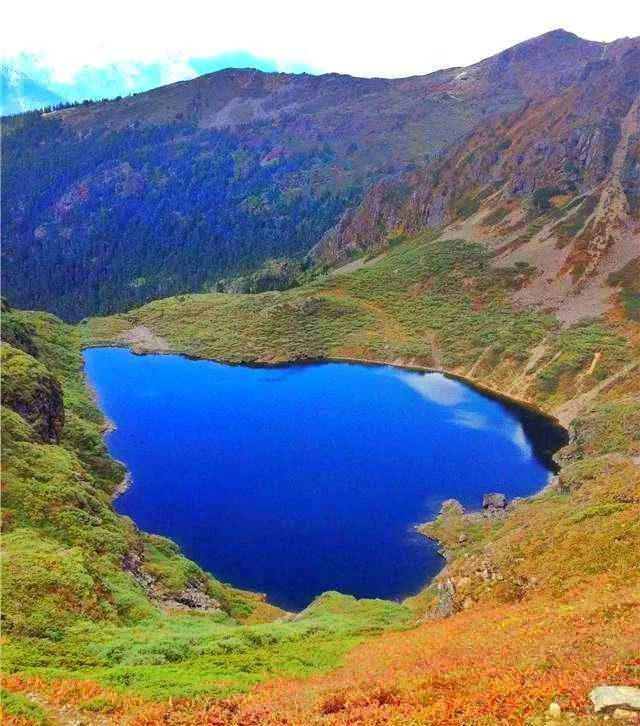
Heart-Shaped Lake Near the Village
In the past year, the number of tourists in Yunnan has approached 400 million. Yet, in this very Yunnan, there is a village that has seen fewer than 1,000 visitors in the past 12 years, guarded by nine breathtaking lakes and a sacred mountain!
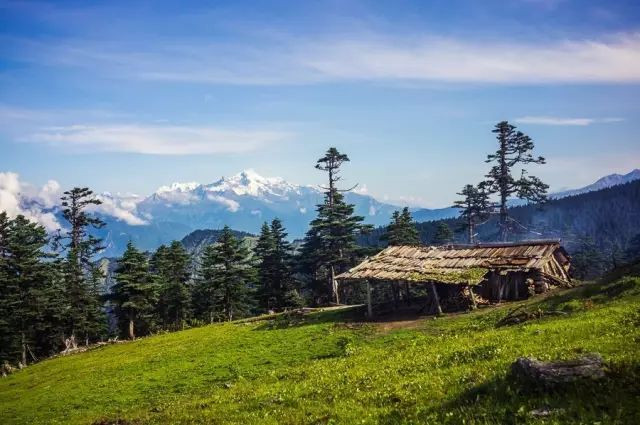
Zhan Village: A View of Snow-Capped Mountains
This is Luotong Village (洛通社). It is a beautiful Tibetan village hidden in the northern mountains of Yunnan, located in Luoyi Village (洛义村), Badi Township (巴迪乡), Weixi County (维西县), Diqing Prefecture (迪庆州). Even local residents of Shangri-La (香格里拉) are seldom aware of its existence.
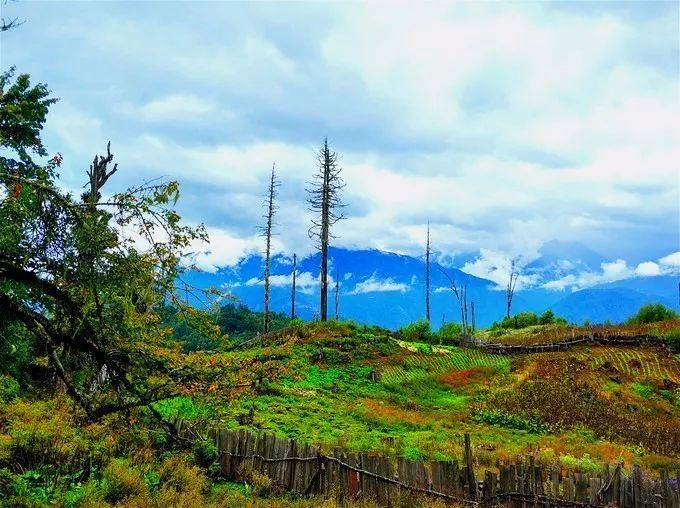
Since the release of a video by “Yitiao” introducing Luotong Village, it has gradually gained popularity and opened new hiking opportunities within the travel community.
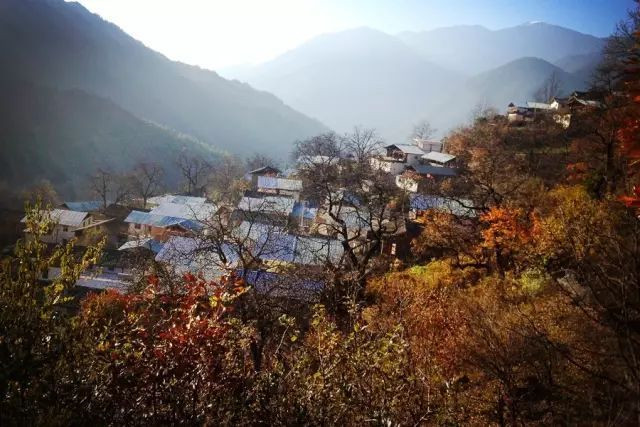
A Hidden Village Guarded by Nine Lakes and a Mountain
Luotong Village is a Tibetan village located along the ancient Tea Horse Road. This place is incredibly remote; it takes at least six hours to drive there from Shangri-La!
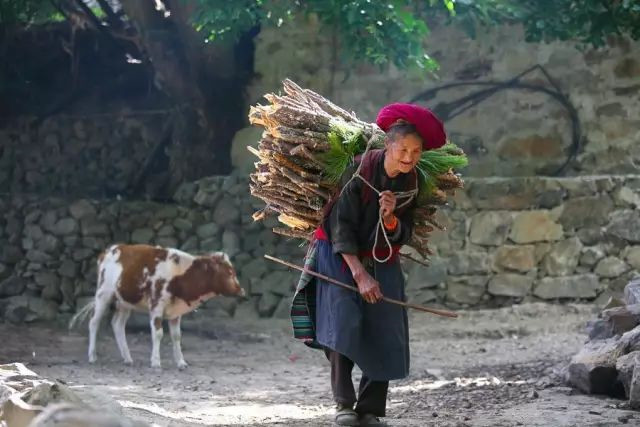
The Timeless Charm of Luotong Village
No one knows the exact age of Luotong Village, but it is surrounded by over 1,000 walnut trees that are more than 400 years old. Untouched by the outside world, it retains its original beauty, showcasing the most enchanting simplicity in both its scenery and its people.
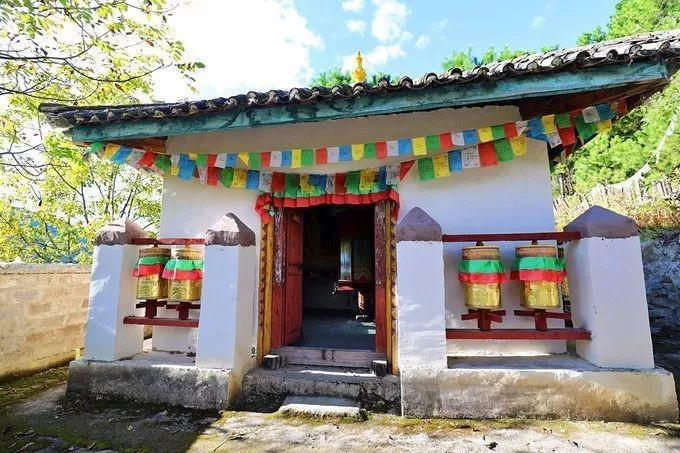
Famous for “Nine Lakes and One Mountain”
Although referred to as “Nine Lakes,” there are actually more than a dozen lakes scattered throughout the area. They resemble pearls that celestial beings have scattered among the mountains. The term “Nine Lakes” typically refers to a cluster of the more prominent lakes, all embraced by a series of steep, intertwining mountains. These nine lakes are the most celebrated among local legends. As you stroll along the forest paths of “Nine Lakes and One Mountain,” the chorus of various bird calls fills the air, as if playing a symphony of praise for the enchanting woodland.
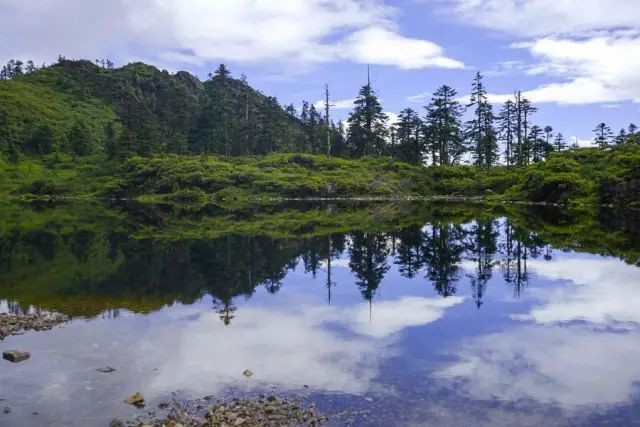
Hiking to the Enchanting High-altitude Lakes
By hiking up from the back of the village towards the majestic Gunbu Geqi Mountain, you can glimpse the nine mysterious and beautiful alpine lakes, along with the renowned Meili Snow Mountain. The “one mountain” refers to the famous Meili Snow Mountain, a stunning landmark that captivates visitors with its breathtaking beauty.
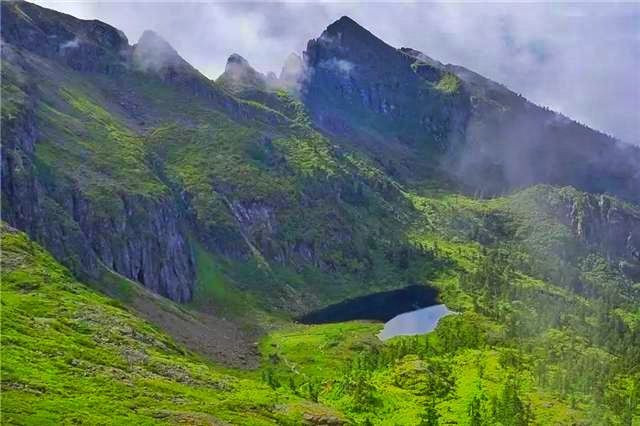
A Spectacular View from the Mountain Peaks
When the weather is clear, villagers can take their livestock up the mountain and simultaneously see seven lakes from the summit, along with the magnificent Meili Snow Mountain across the way. Indeed, this is the breathtaking scene of the “Golden Summit,” where the sun illuminates the mountain peaks in a dazzling display!
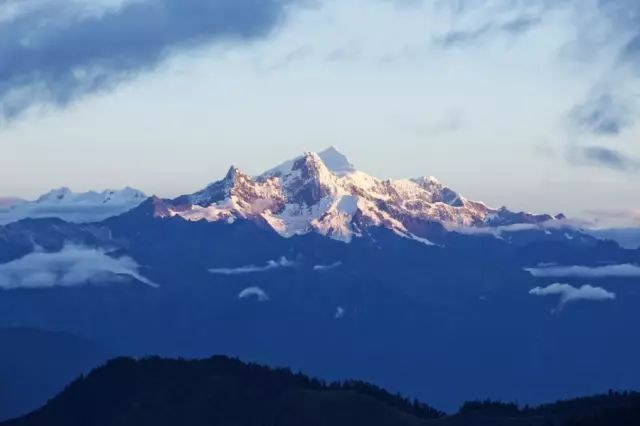
Mysterious Dark Lakes
There are also dark lakes that hold intriguing tales; it is said that if you throw a stone into one of these lakes, it will summon a heavy downpour!
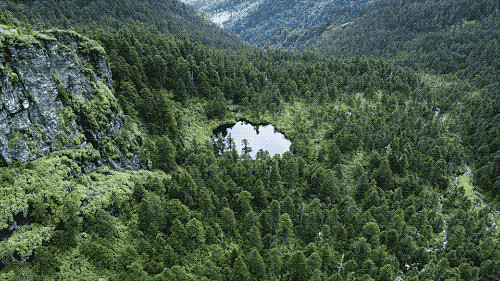
Turquoise Glimmering Lakes
There are also lakes that resemble turquoise, embedded in the mountains, sparkling brilliantly in the sunlight.
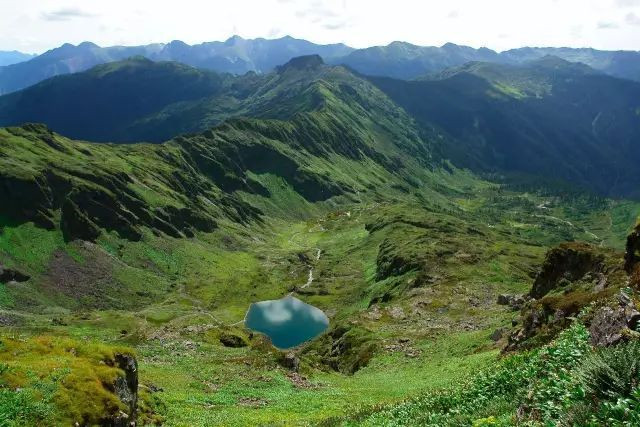
Romantic Heart-Shaped Lakes
There are also romantic heart-shaped lakes, said to guarantee a 100% success rate for proposals made here!
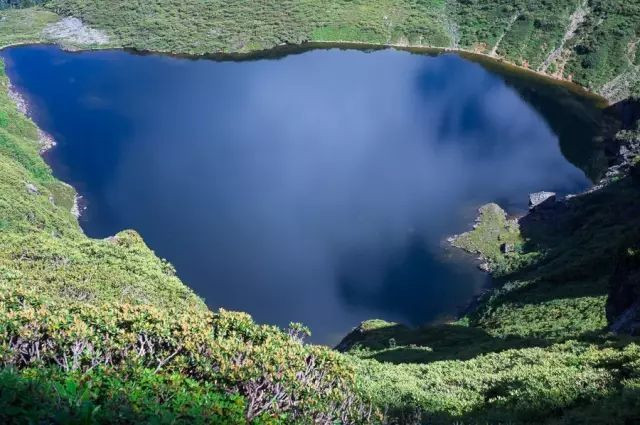
Nine Unique High Mountain Lakes
Each of the nine high mountain lakes has a distinct shape, along with its own stories and legends.
Some lakes even change with the weather, disappearing and reappearing in a magical manner!
Due to limited communication, many people know only about Meili Snow Mountain (梅里雪山), unaware that such incredible scenery exists nearby!
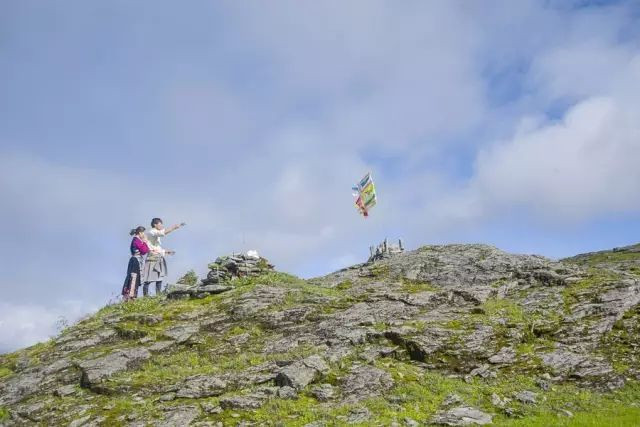
A Place Even More Challenging than Yubeng
For the villagers, the sacred mountain and lakes are places of blessings and prayer.
For outdoor enthusiasts, this area offers a rare trekking route where you can encounter nine unique and intriguing high mountain lakes along the way!
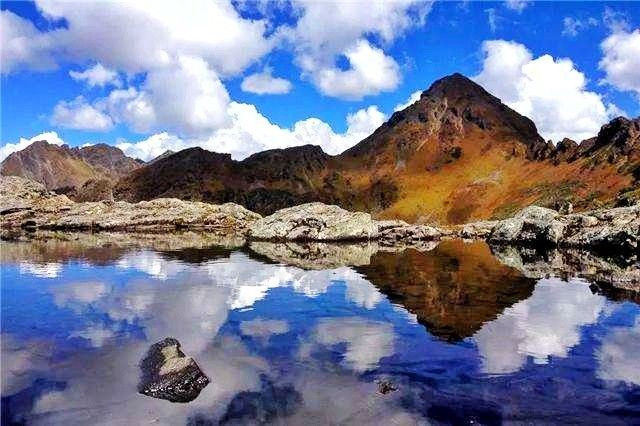
A Journey Worth the Challenge
Although it takes a day and night to reach the summit and requires acclimatization to the high altitude, you’ll be rewarded with stunning meadows, forests, and lakes. At night, the Milky Way shines brightly overhead, creating a breathtaking view.
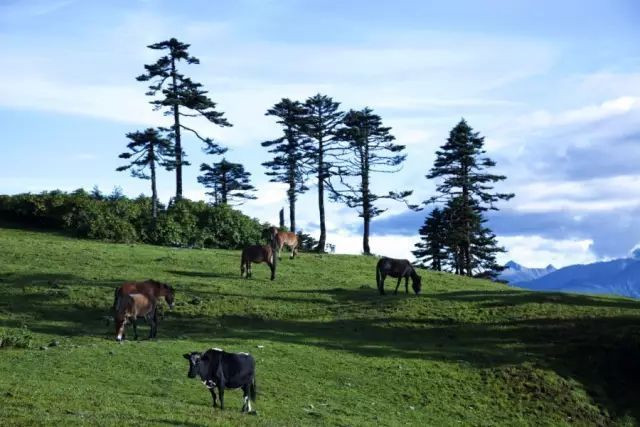
Stunning Views from the Summit
Starting from the village and hiking for two hours uphill leads to even more spectacular scenery. In every direction—east, south, west, and north—there’s a snow-capped mountain, with the most famous being Meili Snow Mountain (梅里雪山).

A Starry Night Above
At night, the sky is filled with countless stars, and the Milky Way stretches overhead, making it feel as if you could reach out and touch it with just a lift of your hand.
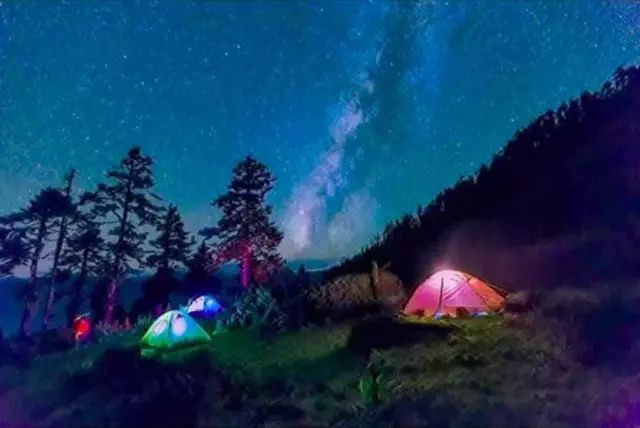
Fresh Milk and Butter Tea
In the shepherd’s houses on the farm, you can often enjoy fresh cow’s milk and freshly made butter tea. The grass on the mountains grows well, and the milk produced from the cows that graze on it is particularly fragrant.
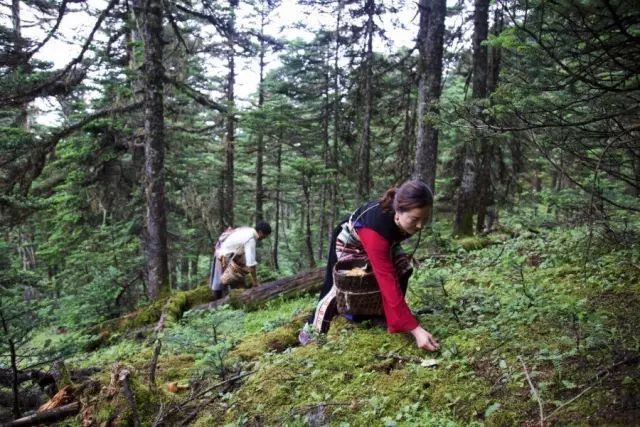
Abundant Wild Vegetables and Mushrooms
Along the way, you’ll find plenty of wild vegetables and mountain mushrooms. If you visit in June or July, the mountains are filled with matsutake mushrooms, which you can gather on your way up. By the time you reach the shepherd’s house, you can enjoy grilled mushrooms.
On clear days, you can see seven lakes from the mountaintop: Heart Lake, Turquoise Lake, Moon Lake, Xiezi Lake, White Lake, Chugang Lake, and Cuoma Lake. These lakes surround the Farm Bugqi Peak, creating stunning scenery that makes every arduous step worthwhile!
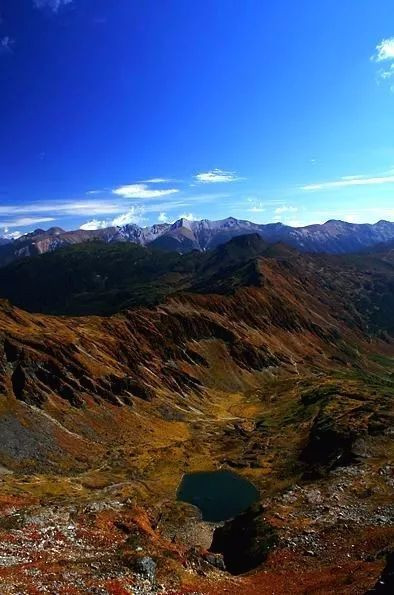
March to May: Rhododendron Blossom Season
From March to May, it’s the season for rhododendrons to bloom, making the mountains particularly beautiful. Due to varying snow depths and melting times, the rhododendrons bloom in a stunning gradient from the foot of the mountain to halfway up, resembling a meticulously landscaped garden.
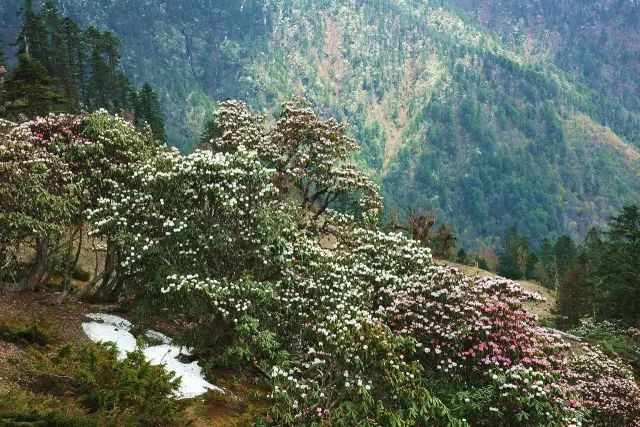
Ascending the Mountain: A Changing Landscape
As you climb higher, the rhododendron trees become shorter and denser. Once you pass the halfway point, the scene transforms; the rhododendrons give way to a carpet of Xuecha (雪茶), a traditional Chinese herbal medicine known for its cooling properties and ability to lower blood pressure.
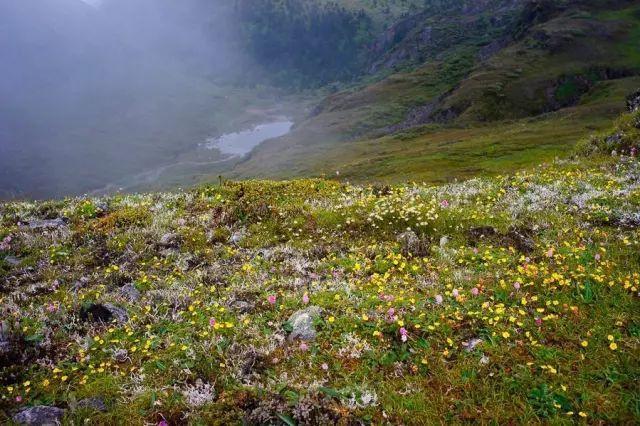
Seasonal Changes on the Mountain
Snow begins to fall in mid-September on the mountain, covering the pastures from December to February, which leads to fewer visits by the villagers. As the snow starts to melt, tiny black spots emerge on the white landscape—these are Cordyceps (虫草), a valuable fungus cherished for its medicinal properties.
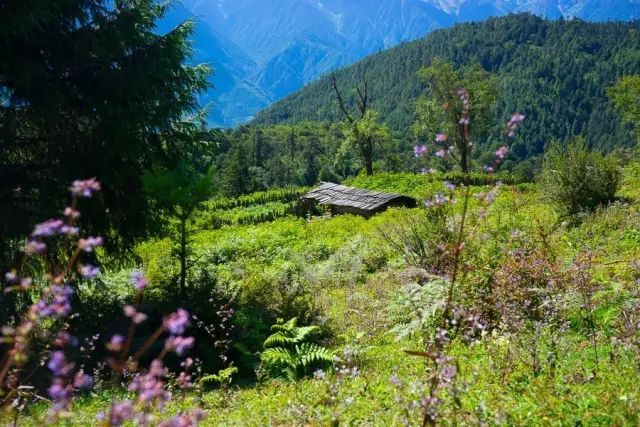
Preserving the Paradise
The villagers cherish their environment deeply and have rejected proposals for mining in the area. Their concept of eco-tourism revolves around staying in local homes and hiring local guides, ensuring that their unique landscape remains untouched and preserved for future generations.
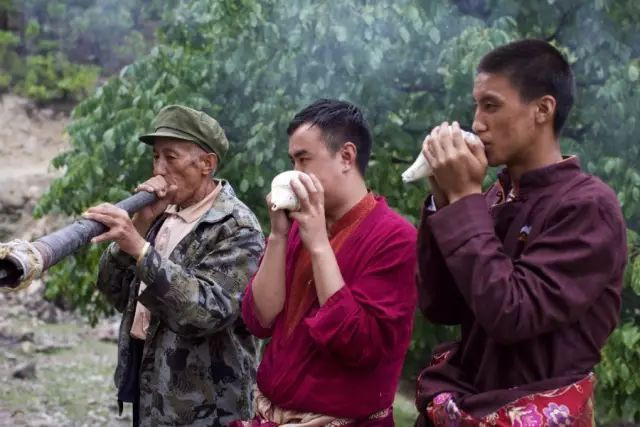
Why Start Developing Tourism?
Decades ago, a young woman from Luotong married a primary school teacher in Yubeng Village, located at the foot of Meili Snow Mountain. As Yubeng developed its tourism, the villagers experienced significant improvements in their lives.
Years later, when discussing the high mountain lakes, the now middle-aged woman remarked, “We have many lakes up in our mountains.” This simple statement inspired her husband, the nearly retired school teacher, to explore the hidden depths of Luotong in 2005.
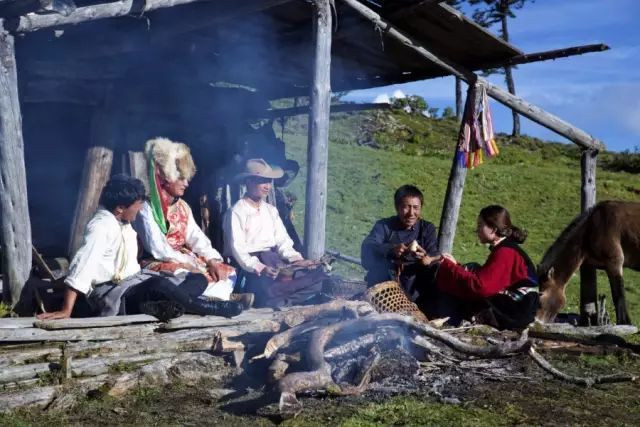
The Journey Begins
In August of that year, he funded a trip for several travelers from Sichuan and Guangdong to explore the area. One of them returned and posted about their experience on the largest outdoor sports and self-travel website in China.
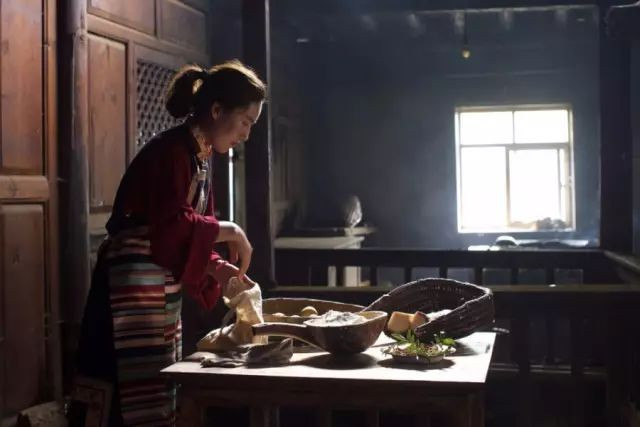
The Rise of Loting Village
A journalist wrote an article about “Nine Lakes and One Mountain,” which helped Loting Village gain recognition among hikers. Gradually, many people began to visit specifically to see the nine highland lakes.
However, even with this newfound attention, fewer than 1,000 people had visited the village over the past 12 years.
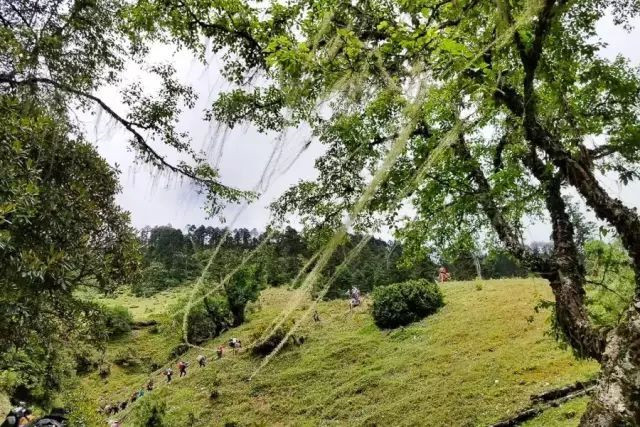

 7 Days GolfingTour
7 Days GolfingTour
 8 Days Group Tour
8 Days Group Tour
 8 Days Yunnan Tour
8 Days Yunnan Tour
 7 Days Shangri La Hiking
7 Days Shangri La Hiking
 11 Days Yunnan Tour
11 Days Yunnan Tour
 6 Days Yuanyang Terraces
6 Days Yuanyang Terraces
 11 Days Yunnan Tour
11 Days Yunnan Tour
 8 Days South Yunnan
8 Days South Yunnan
 7 Days Tea Tour
7 Days Tea Tour
 8 Days Muslim Tour
8 Days Muslim Tour
 12 Days Self-Driving
12 Days Self-Driving
 4 Days Haba Climbing
4 Days Haba Climbing
 Tiger Leaping Gorge
Tiger Leaping Gorge
 Stone Forest
Stone Forest
 Yunnan-Tibet
Yunnan-Tibet
 Hani Rice Terraces
Hani Rice Terraces
 Kunming
Kunming
 Lijiang
Lijiang
 Shangri-la
Shangri-la
 Dali
Dali
 XishuangBanna
XishuangBanna
 Honghe
Honghe
 Kunming
Kunming
 Lijiang
Lijiang
 Shangri-la
Shangri-la
 Yuanyang Rice Terraces
Yuanyang Rice Terraces
 Nujiang
Nujiang
 XishuangBanna
XishuangBanna
 Spring City Golf
Spring City Golf
 Snow Mountain Golf
Snow Mountain Golf
 Stone Mountain Golf
Stone Mountain Golf


















